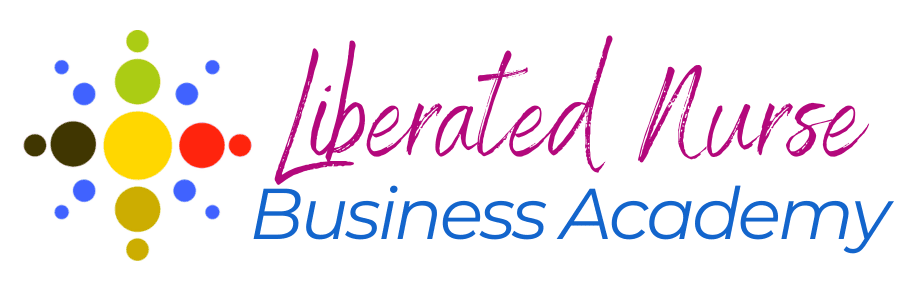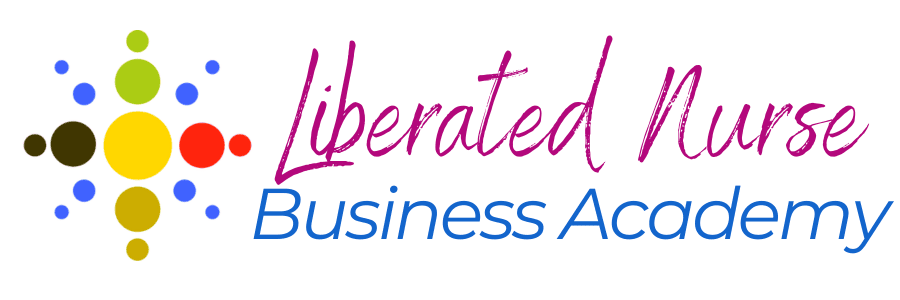Despite their clinical expertise, many nurse entrepreneurs struggle to market their services effectively. It's disheartening to see them invest significant time and resources in marketing efforts that yield minimal results, feeling as though their money is simply being wasted.
Before we delve into what's crucial, let's address some commonly used marketing tools that are often less effective than believed.
Less Effective Marketing Tools
Business Cards: While useful, business cards are frequently overused as a primary marketing method. Handing them out indiscriminately, even to those already connected through email or social media, can be inefficient. A more effective approach is to gather contact information and follow up with valuable, free content. There are more advanced strategies for using business cards effectively, but I’ll discuss that another time.
Brochures: Brochures left at bookstores or holistic centers often go unnoticed and rarely convert into clients unless they are exceptionally well-written and targeted, which requires skill.
Fancy Logos: While visually appealing and important for branding, elaborate logos are often more relevant to entrepreneurs than potential clients. They're a nice addition but not a fundamental necessity for effective marketing.
Marketing Essentials for Nurse Entrepreneurs
Here are ten essential marketing strategies. It's worth noting that many nurse entrepreneurs have not implemented all of them.
However, it’s a mistake to think you must have all these in place before getting clients! I recommend starting at the top of the list and gradually working your way down it BETWEEN your client-getting activities.
Also, while making a good effort is important, don’t make the mistake of trying to get a strategy perfect the first time. It’s best to make small investments of time and money at first and iterate your way to success!
1. Focused Specialization
It's impossible to be everything to everyone. A key aspect of effective marketing is clearly understanding your ideal client. This involves defining who you want to work with, what specific services you offer, where you offer them, and how you deliver them. There are numerous ways to approach specialization.
People are more likely to engage when they see how your services are relevant to them. However, if your marketing message is too broad, such as "I help people achieve holistic wellness," it will be much more challenging to attract clients than if you specialize in solving a specific problem.
In marketing, focus leads to freedom. With a clearly defined specialization, you can craft compelling offerings that resonate deeply with your target audience.
2. A Professional Photo
People are more skeptical than ever about marketing and advertising. Authenticity and genuine connection are crucial. A professional photo is essential for capturing attention and building trust.
We live in an age of short attention spans and heightened skepticism. Therefore, you must make a positive first impression quickly. Potential clients will decide if you are relevant and trustworthy within seconds of seeing your marketing materials.
Your photo plays a vital role in how attractive, safe, and "real" your work appears. A picture truly does speak a thousand words. There are different photo scenarios to consider, each conveying a different message.
3. A Compelling Bio
Most bios fail to engage readers effectively. A good bio must include key elements that make it engaging and informative. To write a great bio, consider seeking guidance from resources like "Bye Bye Boring Bio" by Nancy Juetten or "The New About Me" by Michael Margolis. You can also click here for my tips.
4. A Clear Description of Your Services
Many nurse entrepreneurs struggle to articulate their work in a way that resonates with people. Your description should be clear, concise, and compelling, and avoid jargon or simply listing modalities.
5. A Well-Organized Database of the People You’ve Talked to
Tracking the people you’ve talked to is crucial for effective marketing and relationship building. Start with a simple, basic digital system and improve it over time. The main focus is to USE it! Include any of this info you can get:
Name, email, phone number, and address
Referral source and date of first appointment
Birthday, spending history, and date of last appointment
Number of conversations, paid visits, and referrals received
Demographic information and prospect, client, or partner priority
This data can be used to personalize communication and target your marketing messages.
6. An Extensive Hubs Database
Identify and track potential partners and collaborators. Building relationships with these "hubs" of people you can serve can significantly expand your reach!
7. Case Studies and Testimonials
Stories, case studies, and testimonials are incredibly powerful. They provide social proof and demonstrate the value of your services.
Testimonials: Go beyond generic statements like "AWESOME!" Include specific details, full names, and a headline to grab attention.
Case studies: Showcase client transformations by highlighting the "before" and "after."
8. Staying in Touch Effectively
Consistent communication is essential for maintaining relationships with the people you’ve talked to. Pick ONE channel initially, then grow into using two or three over time.
Email newsletter: Regularly share valuable content, updates, and offers.
Blog: Provide insightful articles and establish yourself as an authority in your field.
Social media: Engage with your audience and share relevant content.
I recommend starting with an email newsletter because it’s an especially powerful tool for building relationships and generating business. Every email you send is an opportunity to connect, inspire, and, ultimately, drive sales. Key benefits of an email newsletter include:
List growth through email sharing
Opportunities for collaboration and interviews
Cost-effective communication
Building long-term relationships
Providing valuable content
9. A Client-Generating Website
A website is essential, but it needs to do more than just look good. Its purpose is to effectively attract your audience and help them choose to buy your program or service.
It's accessible 24/7. Potential clients can explore your services and learn about you at any time.
It establishes safety and trust. A website allows people to "get to know" you at their own pace and comfort level, helping them feel more secure in reaching out.
To create an effective website:
Ensure you can easily update it yourself. Being dependent on a designer for every change can be cumbersome and costly.
Focus on functionality and client attraction, not just aesthetics. A visually appealing website is important, but its primary purpose should be to generate clients.
START SIMPLE. If you can create a document in Word or Google Drive, you can make your first website, and each platform has video tutorials to help you.
Key elements of an effective client-generating website include:
Opt-in page: Offer a valuable gift or resource in exchange for contact details.
Service or program sales page: Tell your audience what you offer, why, and how they can get it. USE YOUR 10 Ps! Make online booking and payment easy to use.
“About” section or page: This is one of the most critical elements of your website. It communicates who you are and presents your credibility. It should align with your message and the feeling you want to evoke in your audience. Include your photo here.
Branding: This is the feeling you evoke through the words, colors, fonts, and images you use to convey the essence of who you are and what you offer.
I recommend you do NOT invest in hiring a branding professional until you’ve completed Stage 1. Why? Your service ideas and understanding of your audience will be refined during Stage 1, and if you invest in branding too early, your investment will be wasted.
10. A Program Development Pathway (aka “Sales Funnel”)
Offering services at different price points is essential for attracting an audience and optimizing your revenue. A program development pathway typically includes:
Free or low-cost offerings (e.g., ebooks, free audio, blog posts)
Programs (e.g., workshops, retreats, talks)
Packages (e.g., series of sessions, specialized packages)
Products (e.g., books, DVDs, supplements)
Implementing these ten marketing strategies can help nurse entrepreneurs effectively reach their target audience, build strong client relationships, and achieve sustainable business growth.
Here’s to your success!


